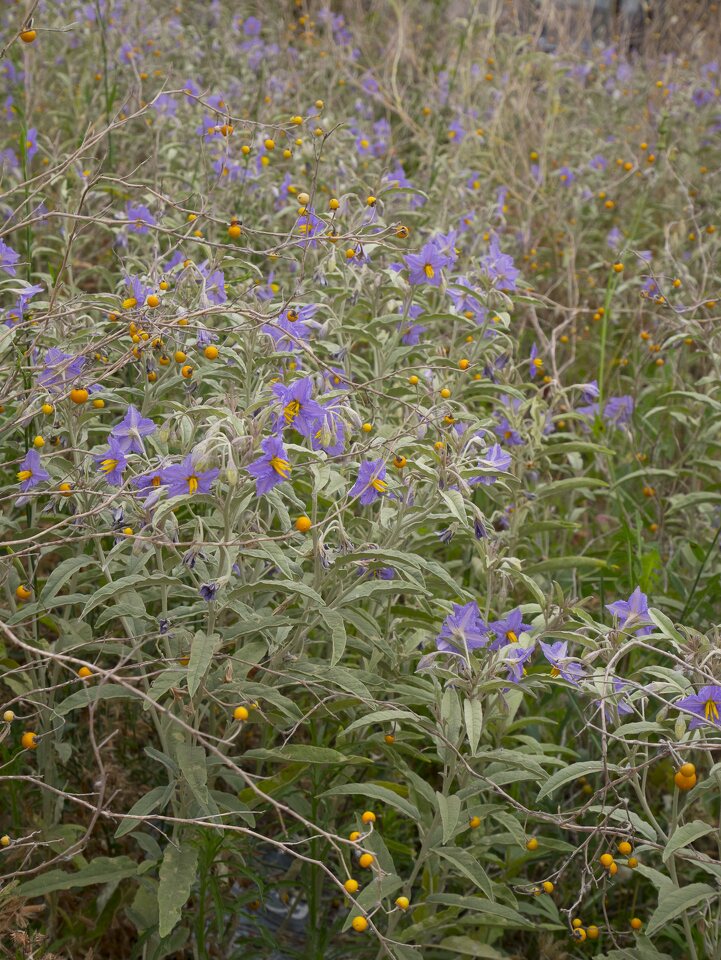
Solanum elaeagnifolium · siauralapis baklažanas
- Bull-nettle, silverleaf nightshade, silver-leaved nightshade
- siauralapis baklažanas
It is native to North and South America. Invasive in many parts of the world. Solanum elaeagnifolium can grow in poor soil with very little water. It spreads by rhizomes as well as seeds, and is common in disturbed habitats. It is very hard to control, as root stocks less than 1 cm long can regenerate into plants.
It is a perennial 10 cm to 1 m in height. The stems are covered with nettle-like spines less than 0.5 cm long, ranging from very few on some plants to very dense on others. Leaves and stems are covered with downy hairs (trichomes) that lie against and hide the surface, giving a silvery or grayish appearance.
The leaves are up to 15 cm long and 0.5 to 2.5 cm wide, with shallowly waved edges. The flowers, appearing from April to August, have five petals united to form a star, ranging from blue to pale lavender or occasionally white; five yellow stamens and a pistil form a projecting center. The plant produces glossy yellow, orange, or red berries that last all winter and may turn brown as they dry.
It is toxic to both humans and livestock. Its thin spines can cause weed dermatitis.
Israel, Nazareth
‥
0 comments
Add a comment